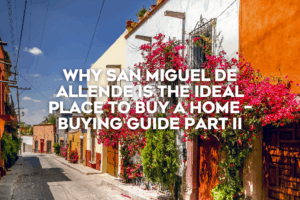- Planned communities encourage participation and thereby enhance local security
- The inclusion of green spaces helps prevent 3.2 million deaths annually caused by physical inactivity
Improving lifestyle is a primary focus of residential real estate developments today, which are increasingly embracing designs of planned or holistic communities. These designs aim to integrate various aspects to promote a balanced and sustainable lifestyle. Their scheme primarily seeks to foster connections among residents, as well as with the surrounding natural environment.
The Organisation for Economic Co-operation and Development (OECD) sets 11 criteria to determine the “Better Life Index,” which considers aspects of the economy, community, access to services, environmental quality, and health care. These criteria are used to assess planned communities, making them a trending model in the real estate world.
Although these developments are generally aimed at being luxurious spaces, real estate companies are revisiting their fundamental principles to build housing projects that promote the well-being and comfort of their residents. Below are the most characteristic aspects of these communities:
• Focus on Well-Being: Planned communities often prioritize the physical and mental well-being of their residents. Spaces are designed to encourage physical activity, relaxation, and connection with nature. Green areas, walking trails, and community gardens not only serve as recreational spots but also help prevent diseases caused by physical inactivity, which, according to the United Nations (UN), result in 3.2 million deaths annually.
• Strengthen Bonds and Participation: These spaces promote social interaction and community participation, which are key factors for the safety of an area. Various studies have shown that more cohesive communities are generally safer and actively involved in prevention policies. This unity can be achieved by including common areas such as meeting rooms, community centers, or shared spaces.
• Seek Connection with Nature: Most constructions aim to harmoniously integrate with the natural environment of their regions; however, few succeed, often resulting in environmental damage. Environmental damage and pollution are concerning issues, as UN figures indicate that 7 million premature deaths annually are related to pollution. Therefore, these developments aim to increase green areas and the presence of nature.
• Promote Sustainable Practices: Sustainability is a central element in planned communities, which seek to incorporate eco-friendly practices such as using sustainable materials, renewable energy systems, efficient water management, and proper waste handling. This not only aims to reduce environmental impact but also to lower long-term living costs for residents, making these spaces more economically viable.
• Ensure Comfort: Through careful urban design that includes modern infrastructure, accessible commercial and entertainment zones, nearby educational facilities, ample green spaces, recreational areas, effective security measures, a focus on environmental sustainability, and available health and transportation services, these communities aim to ensure the comfort of their residents. These elements combine to create a comprehensive environment where one can enjoy a pleasant daily life.
In Mexico, to date, there are only five communities that adhere 100% to their original model, which, as mentioned earlier, are aimed at the luxury market. However, hundreds of housing projects are adopting these principles to offer homes that ensure the well-being of their residents, with the added advantage of comfort.
Fuentes de consulta:
http://www.scielo.org.co/scielo.php?script=sci_arttext&pid=S0124-05792013000100002
https://info.inmobilia.mx/blog/comunidad-planeada-que-es-por-que-invertir-en-ella




